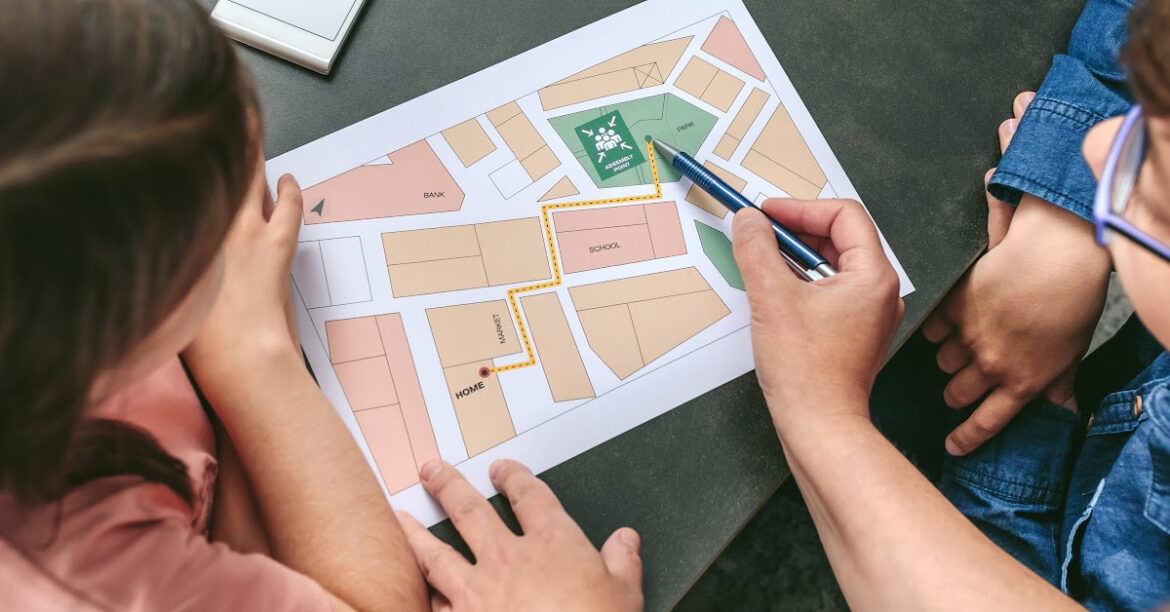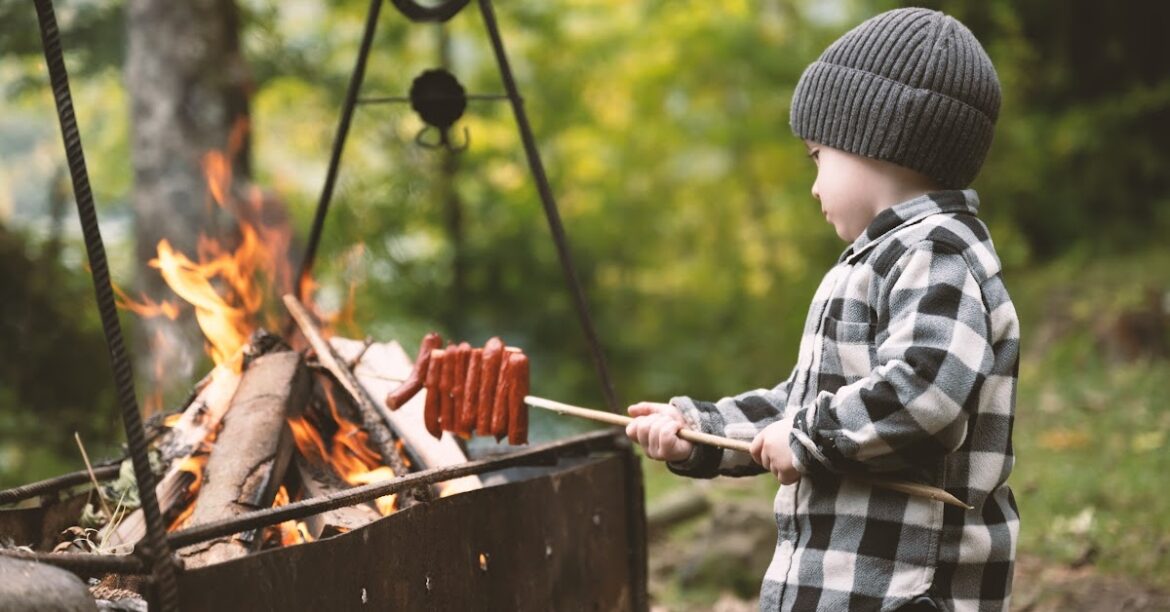Fire safety tips for kids and families should start with education and awareness. Both are critical factors when discussing emergency and life-saving measures. Here are 15 life-saving fire safety tips and skills to teach kids, help your family in an emergency, and keep everyone safe.
But first, it’s essential to understand that a fire can start in or around your home in many ways.
THE TOP CAUSES OF HOUSE FIRES:
- Unattended cooking in the kitchen
- Heating appliances, including fireplaces
- Electrical fires from faulty wiring
- Careless smoking
- Unattended candles
- Poorly managed outdoor fires
- Incorrectly stored flammable liquids
- Christmas trees and decorations
Knowing how your kids will respond, with or without supervision, to these fire emergencies will save lives and property. If you haven’t considered it, NOW is the time to enlighten your family members with life-saving fire safety tips!
This advice and these drills can be broken into three categories. The first has to do with:
EQUIPMENT AND PLANNING:
- Test smoke alarms and carbon monoxide detectors
- Discuss a family’s “Fire Escape Plan”
- Practice fire drills
- Fire extinguisher training
- Memorize emergency numbers
Smoke and Carbon Monoxide Detectors: Teach your children what the smoke alarms sound like. Get in the habit of testing your smoke alarms and changing the batteries twice a year. Do it when you turn your clocks from standard to daylight savings time and vice versa. Or, do it on the first of the year and the 1st of July. Or, maybe change them out on the summer and winter solstice. The point is to do it regularly.
Escape plan: When developing a fire escape plan, make sure to have the whole family involved. Here are some points you can cover as a suggestion:
- Have a family meeting spot.
- Discuss escape routes using different scenarios.
- How would you get out of the house in the morning? At mealtime? How about in the middle of the night?
- What if Mom and Dad were not home? Or if you were alone.

Practice Fire Drills: Involving the whole family can make it a ‘fun’ experience for the kids. For example, you could review the family escape plan when you change the smoke detector batteries twice a year. Practice your escape plan with your family members and help them understand how serious a house fire can be.
If yours is a two or three-story house and the stairway is blocked, is there an emergency rope ladder that could be hung from a window? The National Fire Protection Association and other safety associations strongly recommend that each occupied room above the main floor have an escape ladder. They are compact and easy to store. Are your older kids able to assist and help supervise the younger ones?
Fire Extinguisher Training: Teach your older, more responsible kids how to use a fire extinguisher. This includes using the P.A.S.S procedure, which shows how to pull the safety pin, where to point an extinguisher, and how long it will last. Please ensure it’s easily located, charged, and ready to use.
CHILDREN’S DO’S AND DON’T IF A FIRE BREAKS OUT:
- Don’t hide, seek help
- Get out, stay out & stay alive
- Leave belongings behind
- Stay low in smoke
- Do not open hot closed doors
Scared and younger children may tend to hide during a fire. Emphasize, especially to the youngest, to “get out and stay out” of a burning house.
Parents Notes: Do not return to retrieve any prized belongings. The important papers, those memorable photos, that expensive artwork on the wall, or a little one’s favorite stuffed animal isn’t worth the risk. “Stuff” can be replaced, but lives cannot.
Also, remember there’s less smoke near the floor. So, crawl if you have to. If a door feels hot, do not open it. It’s essential to quickly and efficiently account for all family members.
When you’re safely out of a burning building, stay out. Have an assigned meeting place outside. Only trained firefighters should enter a home that’s on fire.
OUTDOOR FIRE HAZARDS CHILDREN TRAINING:
- Outdoor fire safety awareness
- Campfire cooking classes
- Stop, drop & roll
- Survival skills practice
- Fire pit construction
With backyard campfires so popular today, it’s a good idea to review safety precautions with all family members, not just the kids. If you’re planning s’mores or maybe something a bit more advanced, develop some fun cooking classes that everyone could participate in.

This could be part of a fun, family-orientated, ongoing survival skills exercise that could include many activities, including how to safely position, build, and use an outdoor fire pit. Start by learning how to safely make a fire, build a thick bed of coals for Dutch oven cooking, or cook on a grill over an open flame. Get creative with exciting recipes!
A most essential drill to teach youngsters is the STOP/DROP & ROLL technique if their clothes catch fire. Pray it never happens, but it’s always best to be prepared.
AVOID FIRE TRAGEDIES:
According to the US Fire Administration, the most recent 10-year average of house fires includes these startling statistics:
- 374,300 fires
- 2,720 deaths and more than 10,000 injuries
- $9 billion in property damage
Sadly, fire departments respond to a fire somewhere in the US nearly every 30 seconds!
Meanwhile, in Canada, there are roughly 30 residential fires daily and approximately 200 fire deaths yearly.
Most of these tragic stories could have been prevented in Canada and the United States with the proper precautions and a safety plan. As parents, this knowledge comforts us, knowing that we can take steps to prevent such tragedies.
EMPOWER YOUR KIDS WITH THESE FIRE SAFETY RULES:
You can do many things to increase your child’s knowledge of fire safety. It starts with awareness and education. Please, at supper tonight, involve the entire family in a serious conversation about life-saving fire safety tips.
Discuss the importance of:
- Never play with lighters or matches.
- Have an escape plan and practice it with the whole family.
- Stop/Drop & Roll if your clothes catch fire.
- Knowing there’s less smoke near the floor. So, crawl to escape a fire.
- Getting outside fast and go to the meeting spot. It’s scary when there’s a fire, but DO NOT hide.
- Having your kids help remind you to test the smoke alarms routinely.
Protect your family with expert advice. Contact your local WE LOVE FIRE® dealer today for a free fire safety consultation and learn how to choose the safest appliances for your home.
